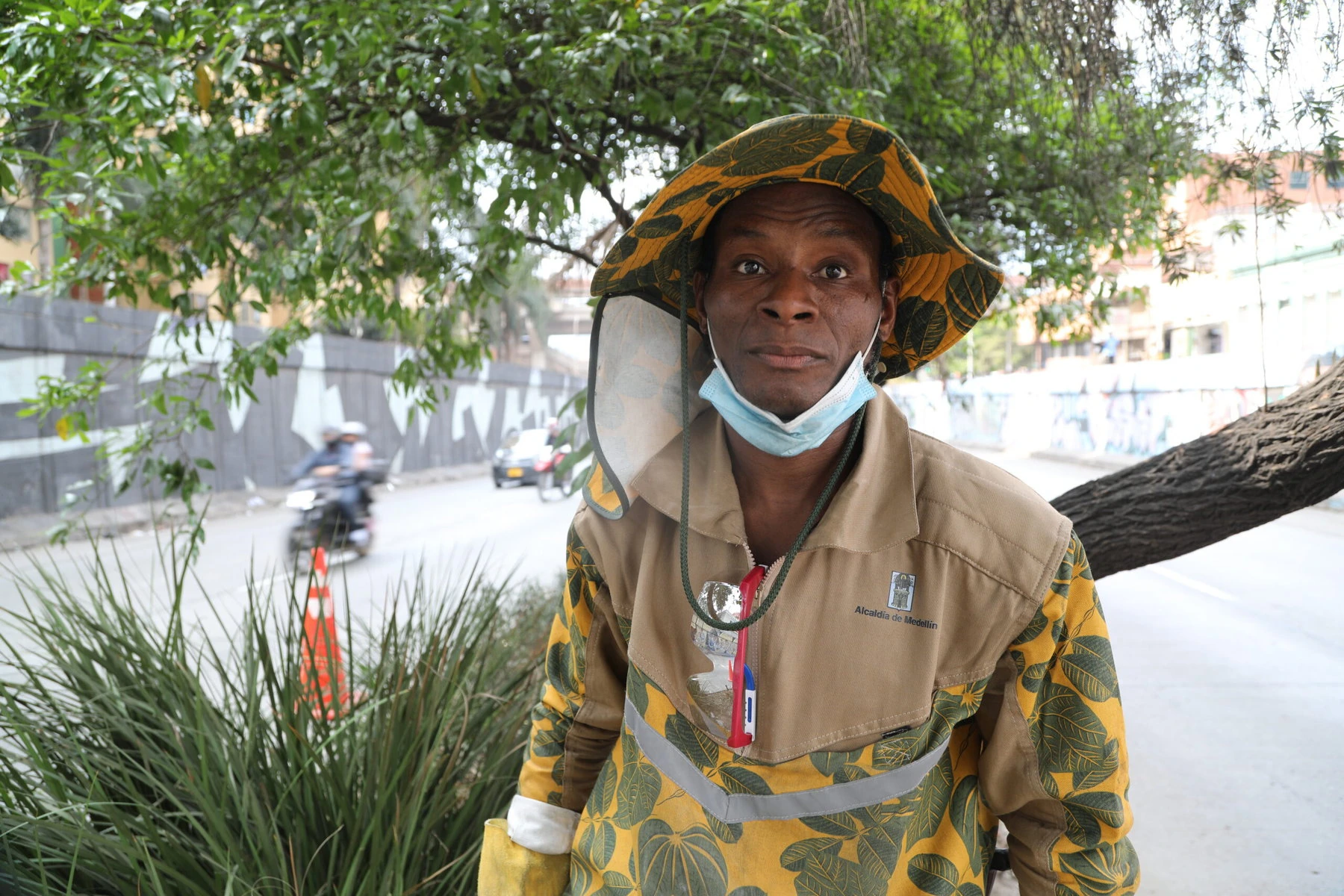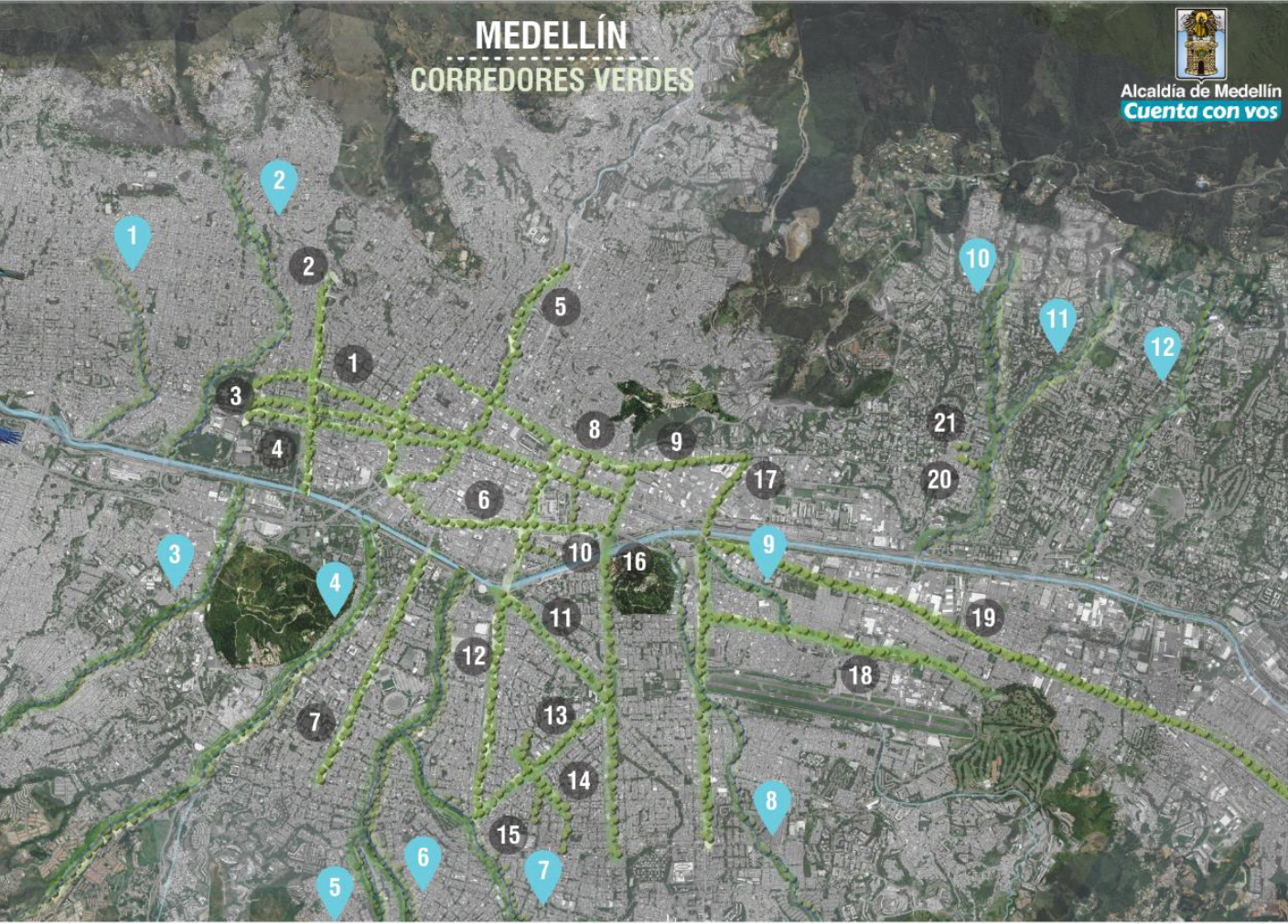One of them is Victoria Perez. Back at the Avenida Oriental, where 2.3 kilometers of paving has been replaced by gardens, she is pruning a brush. The 40-year-old, like all of the other gardeners in the Green Corridors project, received training by experts from Medellín’s Joaquin Antonio Uribe Botanical Garden.
“I’m completely in favor of the corridors,” says Perez, who grew up in a poor suburb in the city of 2.5 million people. “It really improves the quality of life here.”
Wilmar Jesus, a 48-year-old Afro-Colombian farmer on his first day of the job, is pleased about the project’s possibilities for his own future. “I want to learn more and become better,” he says. “This gives me the opportunity to advance myself.”
The project’s wider impacts are like a breath of fresh air. Medellín’s temperatures fell by 2°C in the first three years of the program, and officials expect a further decrease of 4 to 5C over the next few decades, even taking into account climate change. In turn, City Hall says this will minimize the need for energy-intensive air conditioning.


Going forward, preventing and adapting to hotter temperatures will be a major and urgent challenge for cities. The number of cities exposed to “extreme temperatures” is set to triple over the next decades, according to C40 Cities. By 2050, more than 970 cities will experience average summertime temperature highs of 35°C (95°F).
A separate study estimated that in just one of Medellín’s corridors, the new vegetation growth would absorb 160,787 kg of CO2 per year and that over the next century 2,308,505 kg of CO2 will be taken up – roughly the equivalent of taking 500 cars off the road.
In addition, the project has had a significant impact on air pollution. Between 2016 and 2019, the level of PM2.5 fell significantly, and in turn the city’s morbidity rate from acute respiratory infections decreased from 159.8 to 95.3 per 1,000 people.
There’s also been a 34.6 percent rise in cycling in the city, likely due to the new bike paths built for the project, and biodiversity studies show that wildlife is coming back — one sample of five Green Corridors identified 30 different species of butterfly.


Other cities are already taking note. Bogotá and Barranquilla have adopted similar plans, among other Colombian cities, and last year São Paulo, Brazil, the largest city in South America, began expanding its corridors after launching them in 2022.
“For sure, Green Corridors could work in many other places,” says Zapata.
But there are some challenges. The corridors in the inner city areas have to contend with huge amounts of pollution as traffic piles up. Often drivers will also dump trash along the corridors. And the city’s homeless are forced to take shelter in the spaces.
“Like anything, nature requires maintenance from time to time,” adds Zapata. “You need to allocate a part of the budget for this.”
The previous administration “didn’t give enough money” to maintain the corridors properly, says Zapata, meaning some parts have become overgrown and dirty.
That’s a particularly tricky issue as the city now finds itself $2.8 billion in debt. Maintaining the city’s green corridors costs $625,000 a year, according to City Hall.
But now that he’s back in office, Mayor Gutiérrez has pledged to reinvigorate the project of urban planting. And experimentation with new technology, such as “geotextile” pavements that can soak up rain and bend to allow tree roots to spread, is already underway.
“The plan is to plant more Green Corridors and link them to even more hills and streams, recovering what we have already planted,” Gutiérrez tells Reasons to be Cheerful. “It will be a more green Medellín.”



